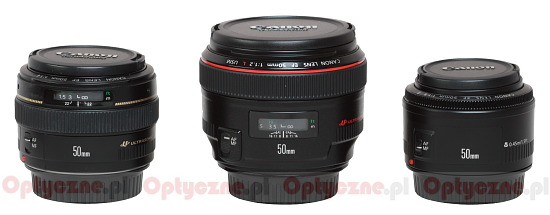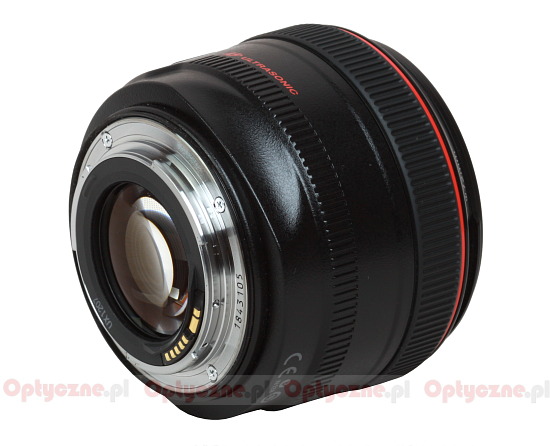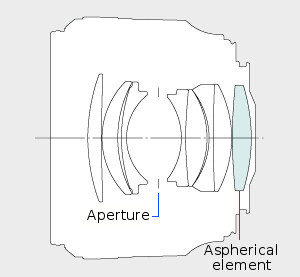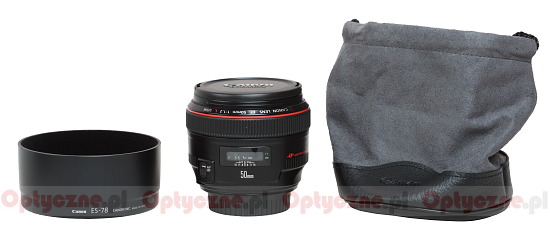Canon EF 50 mm f/1.2L USM
3. Build quality
The picture below shows the whole series of classic, fast Canon 50 mm lenses which are still on the market. The tested lens is positioned in the middle; on the left there’s an f/1.4 model and on the right a cheap and plastic 1.8/50 device.
 |
Please Support UsIf you enjoy our reviews and articles, and you want us to continue our work please, support our website by donating through PayPal. The funds are going to be used for paying our editorial team, renting servers, and equipping our testing studio; only that way we will be able to continue providing you interesting content for free. |
- - - - - - - - - - - - - - - - - - - - - - - - - - - - - - - - - - - - - - - - - - - - - - - -
It’s worth emphasizing that 1.2/50 parameters aren’t the most extreme when it comes to this class of equipment. Even Canon used to have an L series lens in its line-up with the focal length of 50 mm and the aperture of f/1.0, as we mentioned in the introduction but it was withdrawn from sale because of glass elements with high lead content among other things. Even faster lens can be found in the M system – we think here of course about the Noctilux 0.95/50 produced by Leica (or its predecessor with the parameters of 1.0/50) and also about the Voigtlander Nokton 50 mm f/1.1. The rangefinder M system is quite different kettle of fish, though, and in the case of Leica also a definitely higher price segment, even in comparison with the quite expensive L series.
The Canon EF 50 mm f/1.2L USM starts with a metal bayonet mount which surrounds the rear element. Although it is quite big, we don’t see here such a situation as in the EF 85 mm f/1.2L USM model, where the mount contacts had to be glued straight on the element. The rear element moves inside the mount, being the most extended at infinity and hidden of about 1 cm inside the barrel at the closest distance. With that movement the whole system of elements moves at the same time so the focal length of the lens remains the same.
 |
The barrel of the lens is made of magnesium alloy. Immediately behind the mount, looking from above amd a bit to the left, you can find a small focusing mode mechanism switch (AF/MF). A tad above this switch we meet a clear distance scale in feet and meters behind a window. Under the scale there are depth of field markings for the following apertures: f/16, f/11 and f/8.0.
Above the distance scale we see a manual focus ring. It is about one centimeter wide, ribbed and very comfortable to use. Running the whole distance scale takes a 140-degree turn – a quite significant value so small movements of the ring allow you to shift the optical system very slightly and, as a result, set the focus very precisely.
The front element, surrounded by a non-rotating filter thread, is 43 mm in diameter. As we’ve already mentioned, during a change of focus it moves with the whole optical system.
The Canon EF 50 mm f/1.2L USM consists of eight elements set in six groups. The last element (the closest to the detector) is aspherical. The lens tested here is significantly simpler than the 1.0/50 model, which featured as many as 11 elements, two of them aspherical. Inside the Canon 1.2/50 we will also find a circular aperture with eight diaphragm blades, which can be closed down to f/16.

The buyer gets two caps, a lens hood and a soft pouch included in box.
 |






